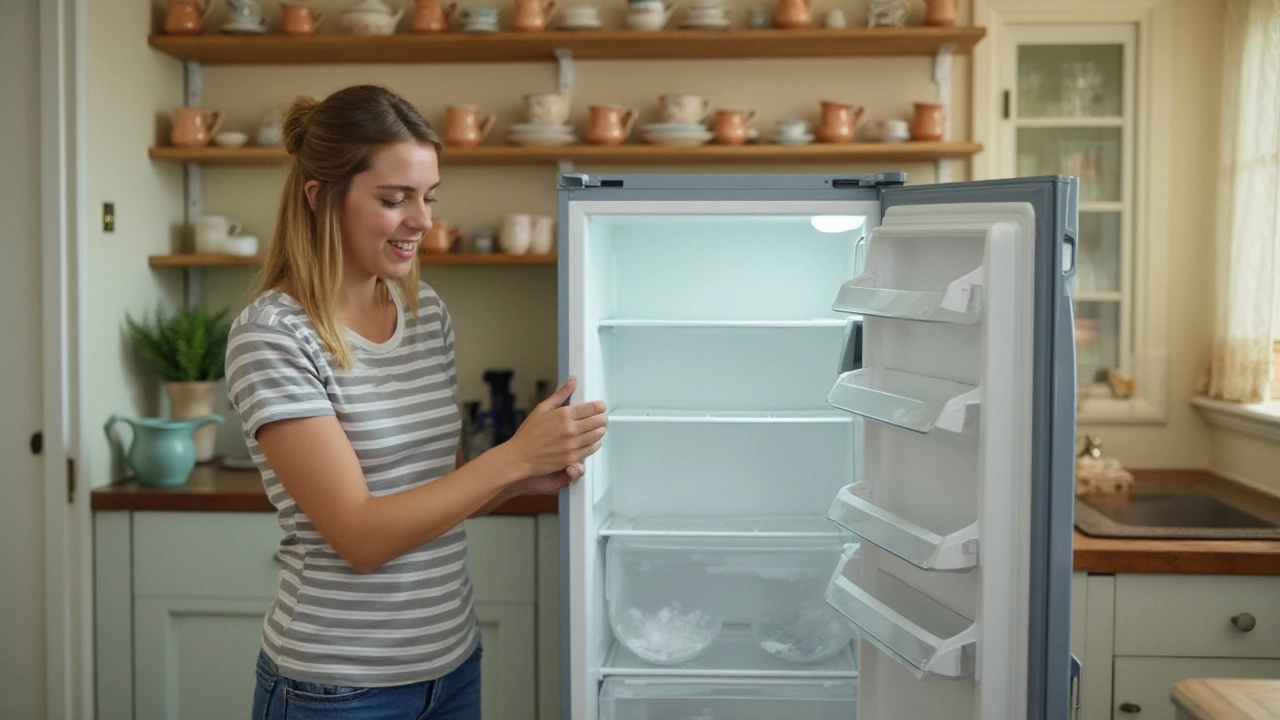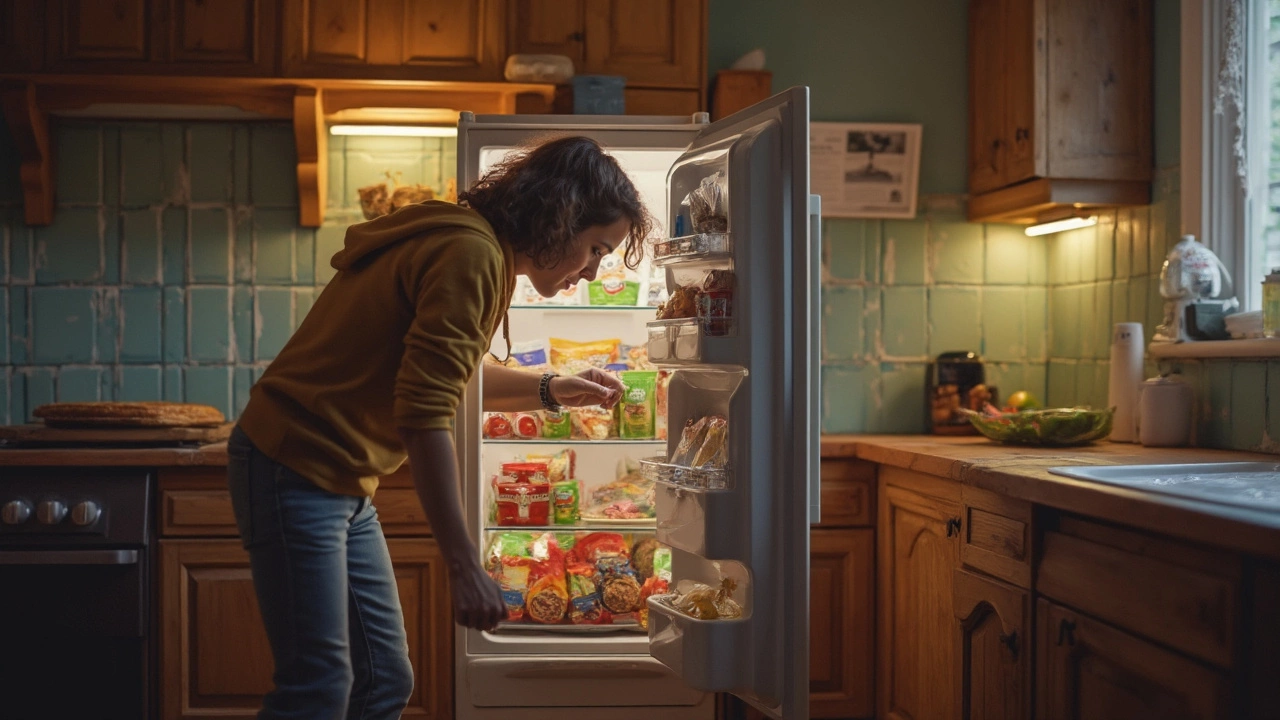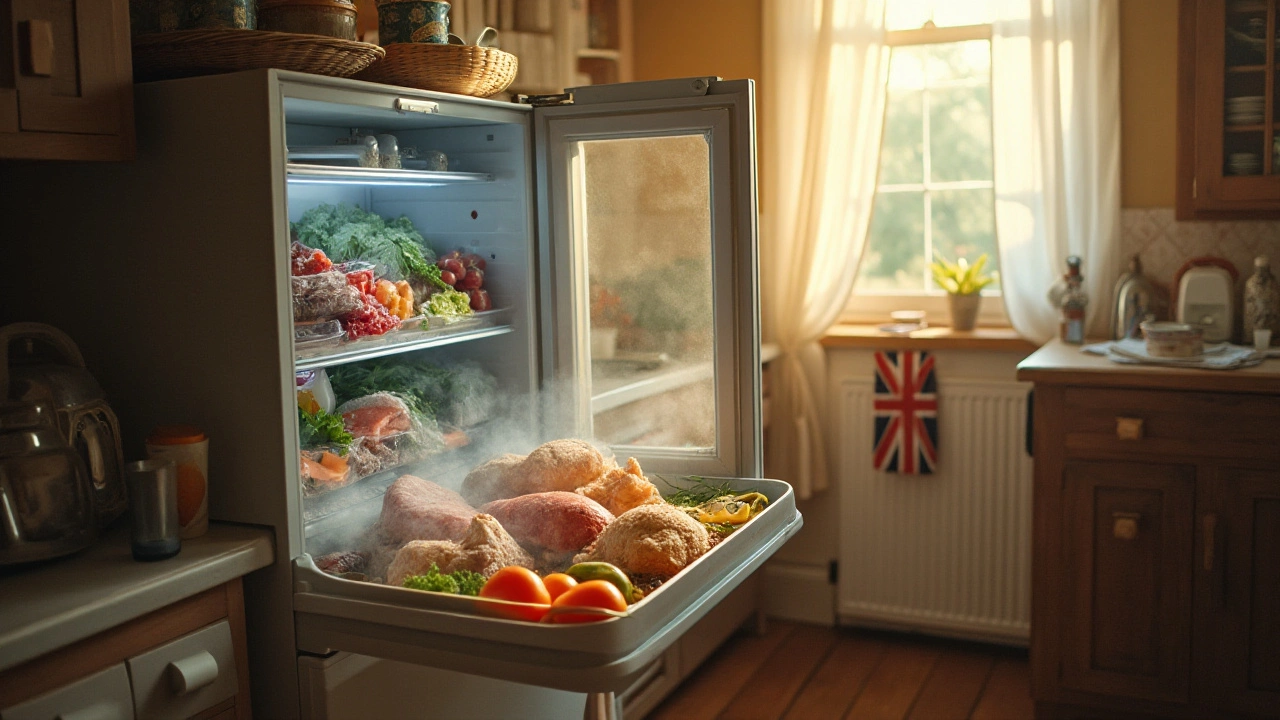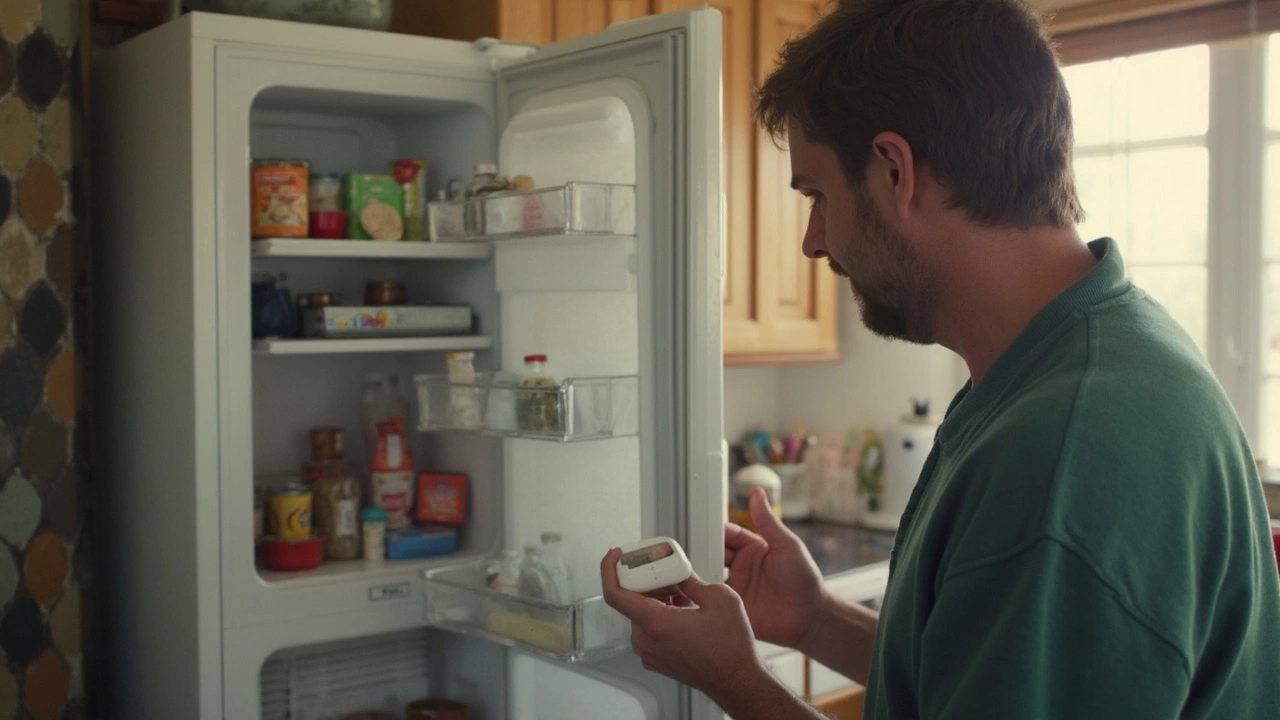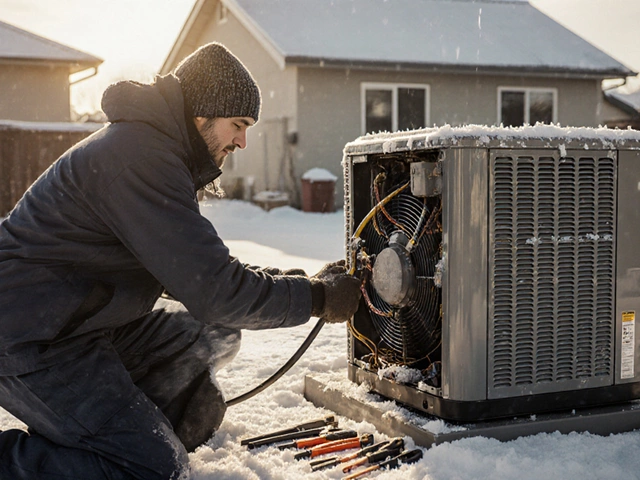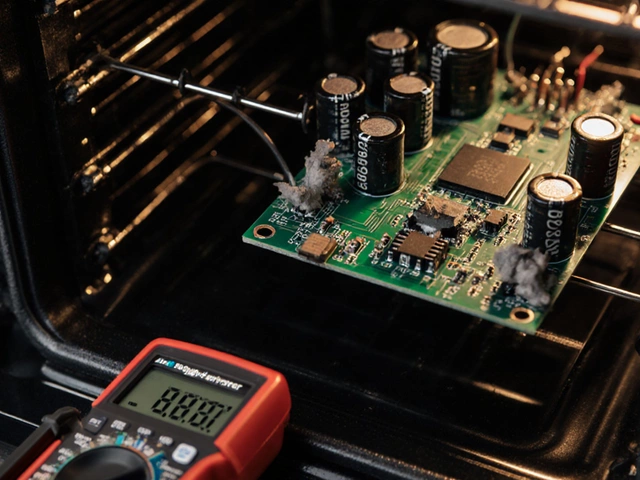Isn't it frustrating when you open the freezer only to discover it's just not as cold as it should be? You might watch your treasured ice cream melt away or your frozen peas thaw into mush. Whether you're a regular chef or a busy parent, a malfunctioning freezer can really throw a wrench in your daily routine.
The good news is there are often simple explanations and straightforward fixes at hand. This guide will walk you through the most common culprits and what you can do to get that freezer back to keeping things frosty. Best of all, many of these solutions are things you can do yourself without needing a major repair bill!
- Common Causes of Freezer Malfunctions
- DIY Troubleshooting and Simple Fixes
- When to Call a Professional
- Preventative Maintenance Tips
Common Causes of Freezer Malfunctions
We rely on our freezers to preserve the flavors and nutrients of the food we love, but when things go awry, it can be baffling to figure out what's gone wrong. One frequent issue is that the freezer isn't cooling as expected. A likely suspect is the freezer settings themselves. It's surprisingly common for the thermostat to accidentally be adjusted, especially in busy households. Double-checking the temperature control is a simple step that should be your first move when the freezer seems too warm. Most freezers should maintain a temperature around 0°F (-18°C) to keep food safe and sound.
Another common cause of malfunction can be a dirty or clogged condenser coil. Condensers rely on air circulation to dispel heat, and if dust blankets this essential part, your freezer's ability to stay cold is compromised. Cleaning the coil is generally easy to do with just a vacuum or soft brush. You'll usually find the coil either at the back or underneath the appliance. Remember to unplug the freezer before starting this cleaning task to ensure safety.
The freezer's door seal, or gasket, is also a crucial yet often overlooked component. If the seal is worn out or has developed gaps, warm air can sneak in, causing the interior temperature to rise. An easy way to test this is to close the door on a piece of paper or a bill. If you can pull it out without resistance, it's probably time to replace the gasket. Over time, this small issue can escalate, causing energy wastage and potential food spoilage.
There might be times when the culprit is the evaporator fan. The fan is responsible for circulating the cold air throughout the freezer. If it's not running correctly, certain areas might not get enough chill. If you do not hear the fan running when you open the freezer, that's a sign it might need servicing or replacement. In many units, this crucial component can be accessed and assessed with some basic mechanical knowledge.
"Appliance malfunctions can be biting, but proper maintenance acts as an underpinning lifeguard," says Michele Kasar, a well-regarded expert in appliance repair.
The defrost system also plays a significant role in ensuring your freezer operates smoothly. If it fails, you might notice a build-up of frost, which can impede cold air flow and efficiency. This usually involves checking timers, heaters, and other components to make sure they're working harmoniously.
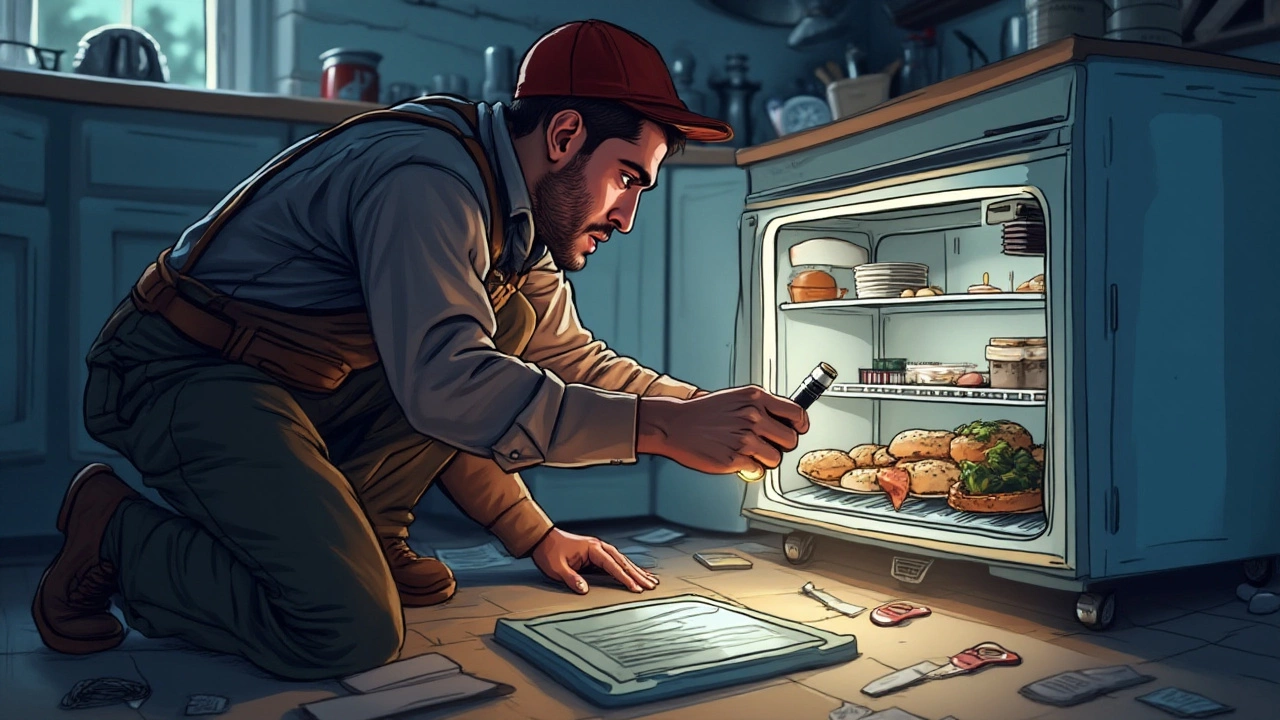
DIY Troubleshooting and Simple Fixes
Troubleshooting a freezer repair issue doesn't always have to be a daunting task. Many times, the problem might be as simple as a setting that has gone awry or a coil that needs a little TLC. Often, turning detective and figuring out the underlying cause is half the battle won. Let's delve into some DIY fixes that could save you the time and expense of a professional call.
First things first, check the obvious. It's surprising but quite common for power cords to be knocked loose, especially if your freezer is in a busy area. Always ensure the appliance is securely plugged into a working outlet. Another key factor to inspect is the thermostat settings. Sometimes, family members inadvertently adjust the temperature, leading to unexpected thawing. Flip through the manual to verify the recommended temperature, making sure your thermometer is accurately displaying this.
If the power and settings are spot-on, cast a closer look at the freezer door seal, also known as the gasket. A damaged or deteriorated seal can prevent your freezer from maintaining an appropriate cold level. Start with a visual inspection for cracks or wear, then conduct a simple paper test. Close a piece of paper in the door and pull it out; if it slips out easily, it's time to replace the seal. This small fix is often overlooked but can work wonders in restoring your freezer's functionality.
"A well-maintained freezer not only saves you money but also extends the lifespan of the appliance," experts often advise. It's clear that regular care can lead to longer-lasting performance.
Dust and dirt buildup is another culprit that can hinder your freezer troubleshooting attempts. Every six months or so, take a vacuum to the coils located either beneath or at the rear of your freezer. These coils are essential for heat exchange, and keeping them clean enhances efficiency. It's not uncommon for them to gather dust and grime, diminishing their capability to lock in cold temperatures. A clean coil means a happy freezer!
If your model has a fan, give that a glance as well. Many times, the condenser fan can get obstructed by debris. This simple check can prevent the fan from failing to vent heat properly, which can otherwise severely impair your freezer's operation. Clear the fan environs cautiously—sometimes, a gentle scrub with a brush does the trick.
| Common Problem | DIY Fix |
|---|---|
| Freezer isn't cold enough | Adjust thermostat; check door seal |
| Strange noises | Inspect fan and coils for debris |
When it comes to keeping your freezer in top shape, a little DIY maintenance goes a long way. From checking the power to cleaning the coils, these simple yet effective steps can often be the remedy you need. However, always prioritize your safety; when in doubt, consult a professional to ensure your appliance remains free from harm. This approach not only saves precious resources but also empowers you in maintaining one of the most crucial elements of your kitchen.

When to Call a Professional
There comes a point when fiddling with your freezer repair attempts has reached its limit, and you find it's time to bring in a professional. This might sound a bit disheartening, especially for those who relish a good do-it-yourself challenge, but there are certain situations where expertise is not just preferable, it's necessary. One key instance is when you detect a strange noise that goes beyond the regular hum and purr of the appliance. Unusual sounds like banging, clanging, or a persistent whistle can indicate a deep-rooted issue, possibly mechanical, requiring specialized equipment and know-how to address.
Another sign that a professional is needed is persistent temperature irregularities, even after attempting various troubleshooting steps. If your freezer cycles between freezing and thawing unpredictably, it could point to a malfunctioning thermostat or a failing compressor. These are components that typically aren't user-serviceable, and tampering with them without proper knowledge might not only void warranties but could cause further damage. A service professional can run diagnostics to pinpoint the root of the problem, ensuring that the right solution is applied.
Fixing freezer issues can also require professional help if there’s a suspected refrigerant leak. This is a serious concern, not only due to potential environmental impacts but also because dealing with refrigerant requires specific technical skills and certifications. Working with refrigerants involves intricate knowledge of safe handling practices and tools, making it inadvisable for the average person to attempt. If you suspect such a leak, keeping safety in mind should always be your priority, and contacting a certified technician becomes imperative.
As noted by the Consumer Reports, "A professional technician is trained to handle refrigerants and can ensure your freezer is working safely and efficiently". This wisdom isn't merely a comfort; it is a reminder of the importance of hiring experienced professionals when high-risk repairs are needed. In cases where electrical issues are suspected, like recurrent tripping breakers when the freezer is in use, reaching out to a professional is crucial to avoid potential hazards such as electrical fires or worse.
Finally, if you're simply not confident in your ability to troubleshoot and execute repairs correctly, it's wise to err on the side of caution. A professional carries the proper tools and troubleshooting expertise that can save both time and money in the long run. They can also advise on any underlying problems that might not be immediately visible, allowing for preventive steps. Leaving it to the experts assures that your freezer troubleshooting ends with a precise, lasting solution, restoring the essential function of your appliance and keeping your food items secure and chilled as they should be.

Preventative Maintenance Tips
To ensure your freezer continues to hum with icy reliability, a bit of regular maintenance goes a long way. Keeping a freezer in top condition means fewer surprises and less stress when it's time to reach for those frozen meals. One of the key principles of freezer maintenance is the old adage: a stitch in time saves nine. By taking proactive steps, not only can you prevent problems from arising, but you can also extend the life of your appliance, saving money in the long run.
Begin by ensuring that your freezer is positioned wisely. Place it in a location where the ambient temperature is stable and not subject to dramatic fluctuations. Avoid putting it next to heat-producing appliances like ovens or dishwashers. This aids in keeping the compressor from working overtime, which not only reduces wear and tear but also cuts electricity costs. Proper airflow is crucial too, so make sure there's adequate space around the freezer for ventilation; an inch or two can make a significant difference.
Regular Cleaning Routine
Cleaning your freezer might sound like a chore, but it's an essential part of freezer troubleshooting. Over time, dust and debris can accumulate on the condenser coils, impacting the efficiency and performance of the appliance. Set aside some time every six months to safely unplug your freezer and vacuum these coils at the back. This simple task can drastically improve cooling efficiency—keeping your items properly frozen and reducing the risk of malfunctions. Also, make it a habit to clean the door gaskets regularly. Sticky seals can prevent the door from closing tightly, allowing warm air to seep inside.
Organized Storage
Organization isn't just for aesthetics; it’s a smart strategy to maintain your freezer's function. By avoiding overcrowding, you ensure cold air can circulate well, which is critical for even cooling. Freezers perform best when full but not packed to the brim. Use sturdy containers and labels to keep track of what's inside without having to open the door for prolonged periods, which helps maintain the internal temperature. Moreover, rotating foods so that older items are used first reduces spoilage and waste.
Finally, an incredible and often overlooked tip is to keep a freezer thermometer. Maintaining the optimal temperature of around 0°F (-18°C) is important. Many issues arise simply from operating at the wrong temperature, leading to both reduced efficiency and spoiled food. Periodically checking with a thermometer helps diagnose issues early, before they become major headaches. If you've noticed consistent fluctuations, that might be an early warning that maintenance or repairs are needed.
“Taking care of your freezer isn’t just about fixing problems; it’s about preventing them altogether,” says a professional appliance technician from Consumer Reports. “With a little forethought and regular care, you can avoid a lot of the common problems people face.”
By weaving these habits into your routine, you can ensure your trusty freezer stays frozen, stretching every dollar and keeping those cold treats just within reach. After all, even appliances deserve a bit of love now and then.
